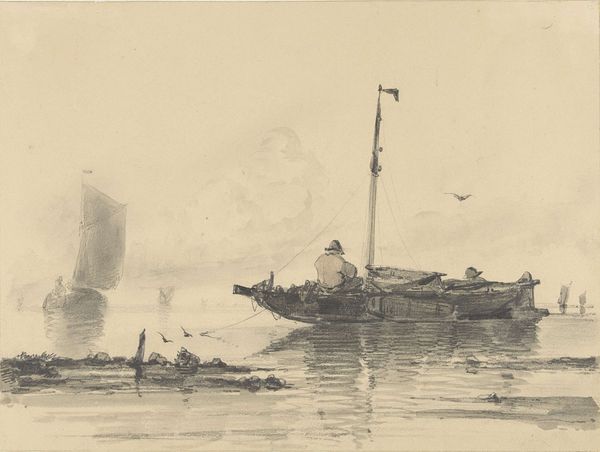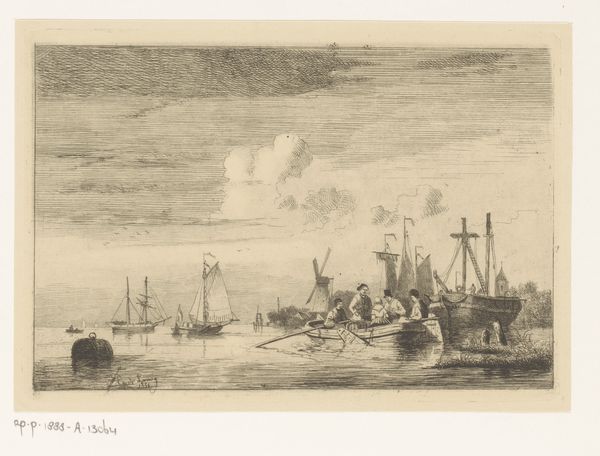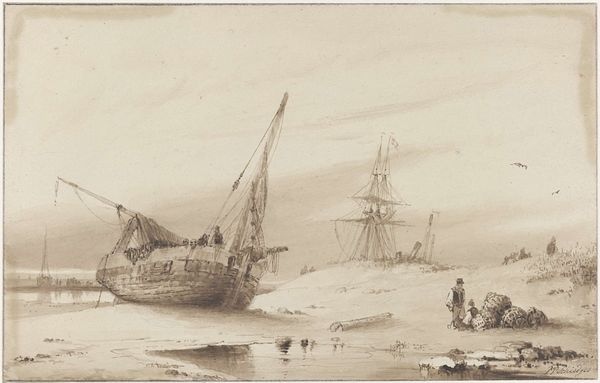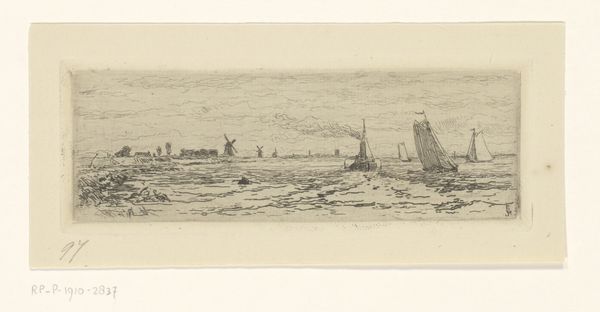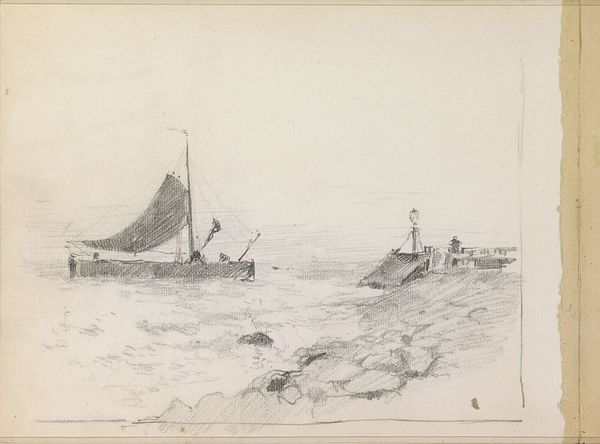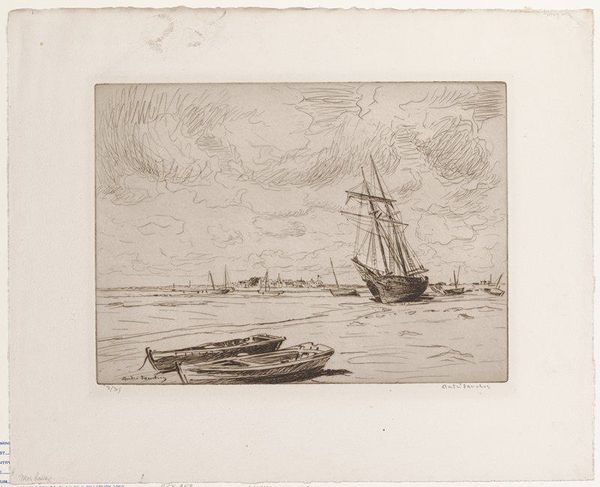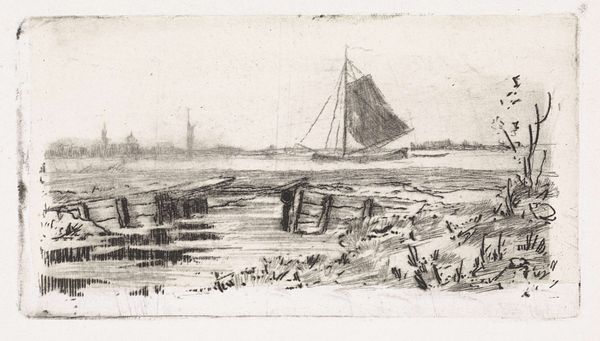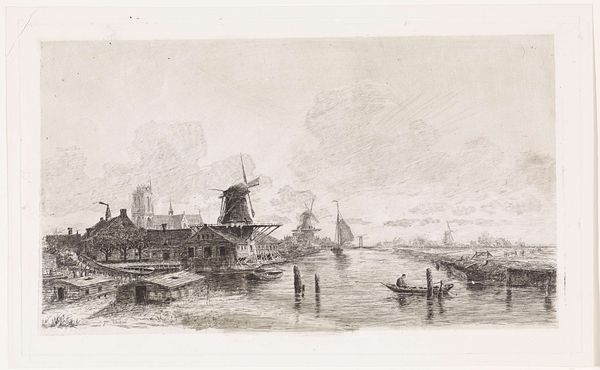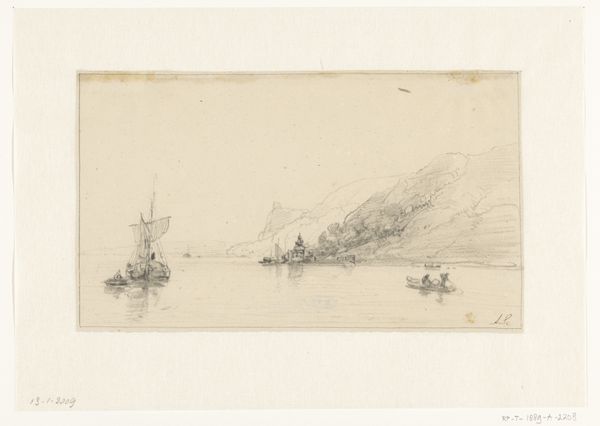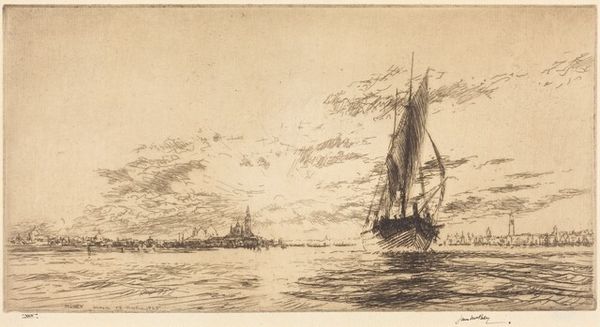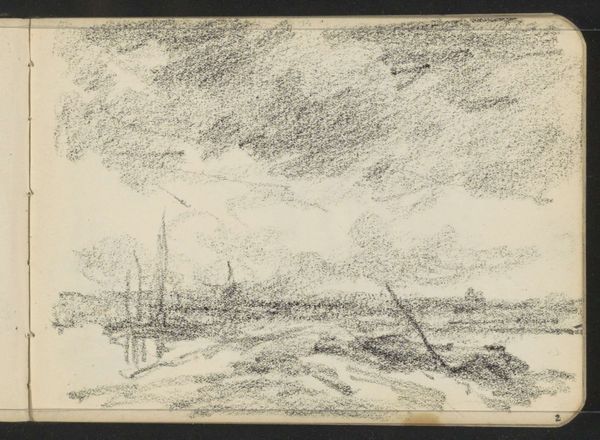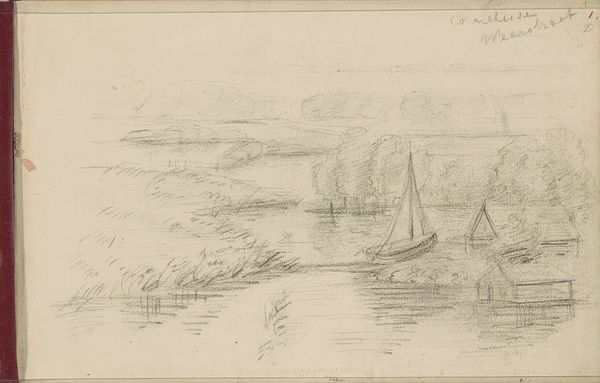
drawing, print, etching
#
drawing
#
dutch-golden-age
# print
#
etching
#
landscape
#
river
#
etching
Dimensions: height 276 mm, width 455 mm
Copyright: Rijks Museum: Open Domain
Editor: So, here we have Elias Stark’s "River Landscape with Village and Wood Sawmill," an etching from 1888. It’s got such a detailed yet ethereal quality. The windmills and reflections in the water are quite striking. How do you interpret this work, focusing on its formal aspects? Curator: The success of this composition relies on Stark's masterful control of line and texture. Note the careful layering of hatched lines creating a convincing sky, but also leading the eye diagonally to the mills and beyond. Editor: Yes, the hatching is quite distinct! What do you make of the contrast between the detail in the foreground structures versus the haziness in the distance? Curator: Precisely! Observe how the sharpness of detail contributes to spatial depth. The strong contrast in the foreground directs the viewer's gaze, initiating a visual journey. Stark invites our eye into the landscape and guides our perceptual exploration through his rendering of space. What function do you think the reflections on the water have? Editor: I suppose that it mirrors what's there in real life and blurs reality slightly, to enhance that dreamy feeling? Also, the vertical lines created add to that sense of perspective... Curator: Precisely, the reflections add to a sense of depth and complexity of form. Do you observe the interplay of light and shadow and their role in structuring the composition? Editor: Now that you mention it, it really adds drama and almost makes it feel alive! It seems so simple, but it really shows how a range of tones can impact a piece of art. Curator: Indeed. Paying attention to those formal properties encourages us to reconsider the nature of art itself. Editor: I completely agree, seeing this only from a compositional perspective changes everything about how I see landscape art.
Comments
No comments
Be the first to comment and join the conversation on the ultimate creative platform.
